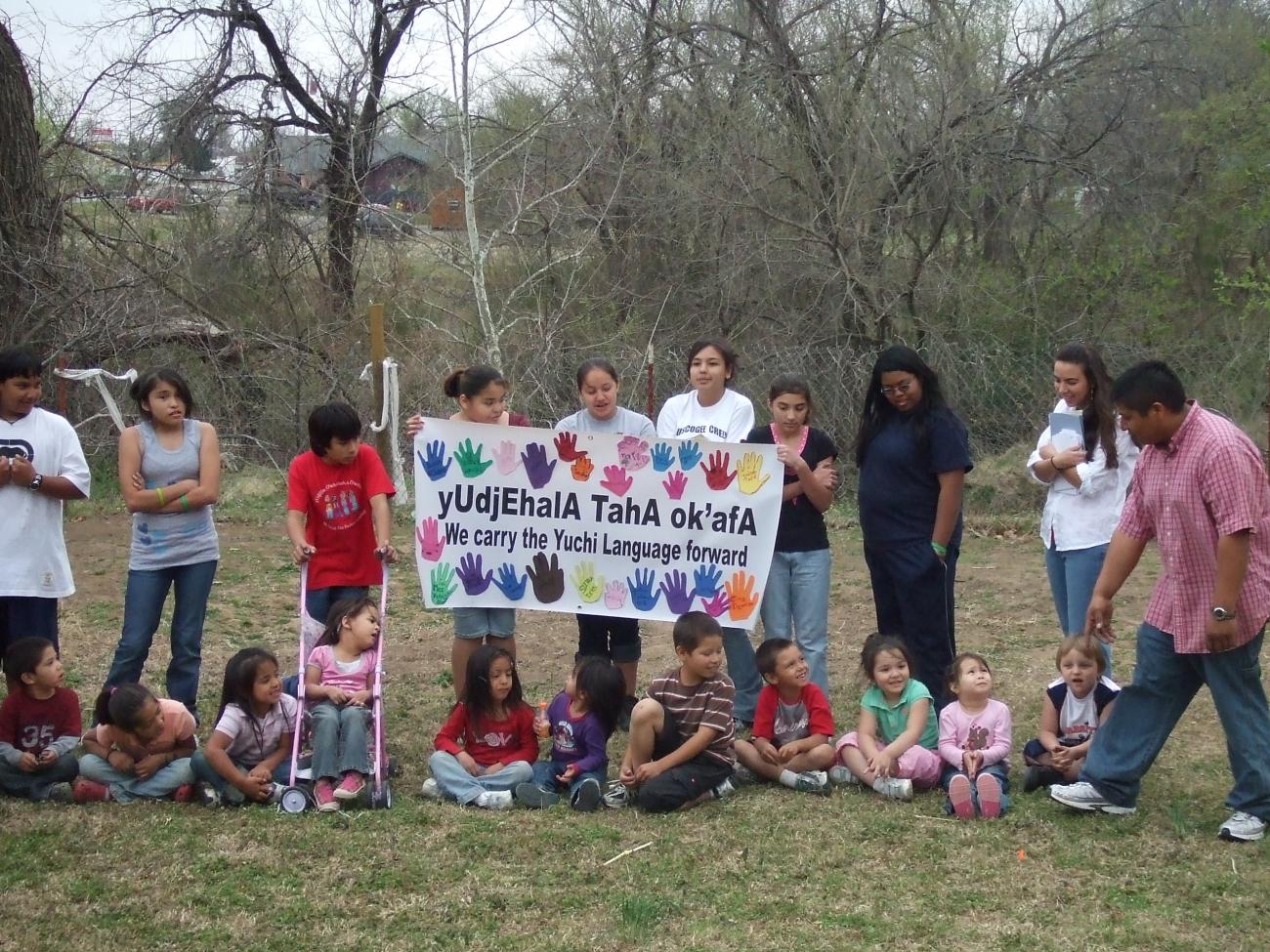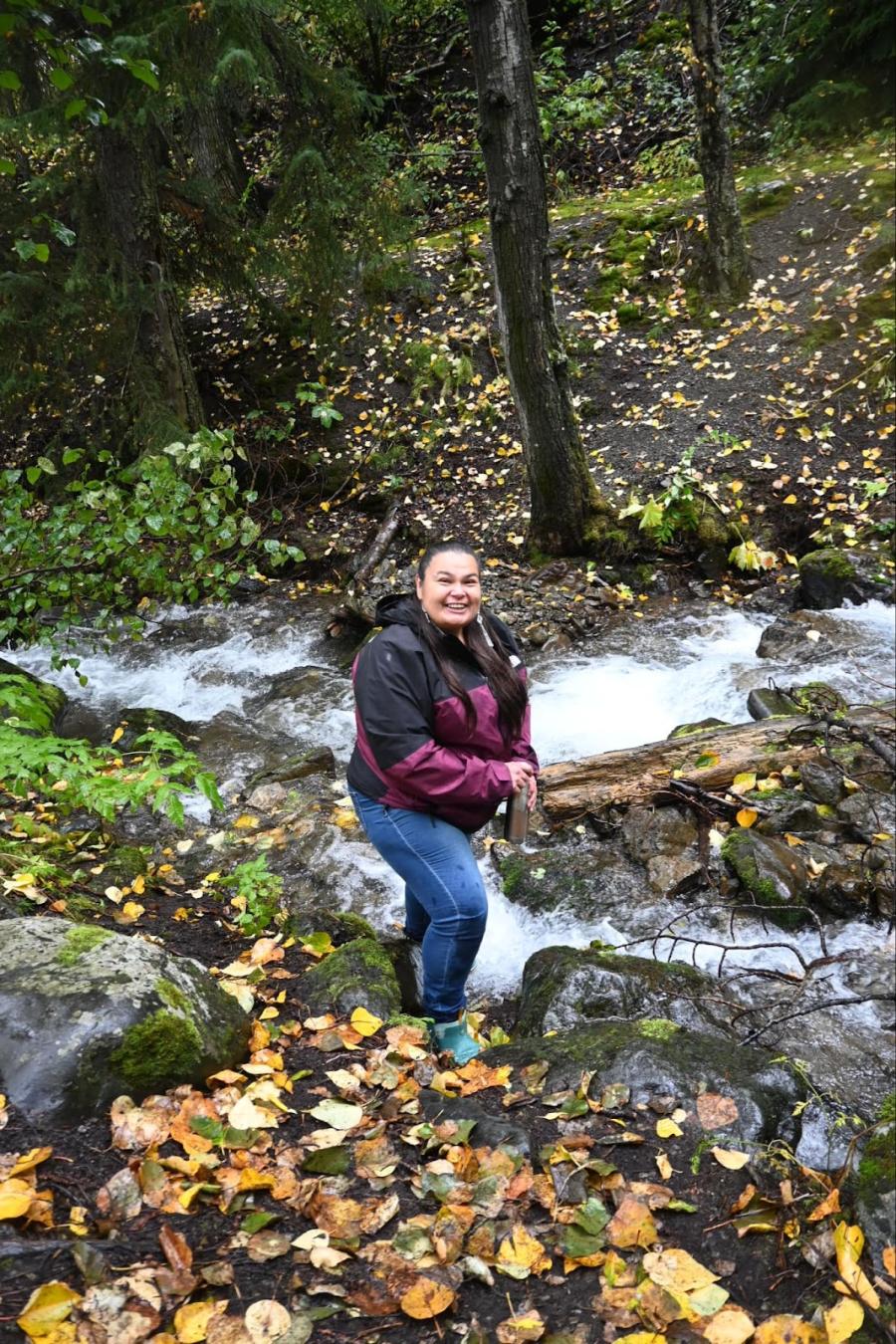
By Kelsey Klug
Native Americans lost control of the education of their children when the United States government forcibly enrolled them in residential schools designed for assimilation into an “American” mold. This policy began in the 1870s and continued on a large scale through the 1970s; a few schools are still operating today. In these institutions, children were severely punished, both physically and psychologically, for using their own languages instead of English. These experiences convinced entire generations of Native people that their children would be better off learning to speak only English. Hoping to spare their children the pain they once went through, parents stopped passing their languages on to their children, and thereby stopped creating fluent speakers of those languages. As a result, numerous languages indigenous to America are now severely in danger of losing their last native speakers.
Many communities now want to revitalize this aspect of their culture, but they first face the obstacle of once again raising children who speak their heritage language as their first language. Native Americans have yet to regain control of their children’s education, so young Native people continue to attend schools where they learn only English and are further assimilated into mainstream society while losing knowledge about their tribal heritage. Scott Russell, Secretary of the Crow Tribe (Apsáalooke Nation), put it this way: “We’re educating all our students to be non-Native right now.” In this regard, it seems that not much has changed since the days of the residential schools.
Yet, United States government policy has officially changed quite significantly: in 1990, Congress passed the Native American Languages Act (NALA), recognizing that “the status of the cultures and languages of Native Americans is unique and the United States has the responsibility to act together with Native Americans to ensure [their] survival.” This legislation promised a lot to Native communities, stating that it was now the policy of the United States to “preserve, protect, and promote” Native Americans’ rights to use their Indigenous languages anywhere, including “as a medium of instruction” in schools.
Congress updated the NALA in 1992, adding a grant program to “assist Native Americans in assuring the survival and continuing vitality of their languages.” This was essential, since the Act previously had no way to fund its directives. However, the amount allotted was not nearly sufficient to finance programming for all interested tribes. Substantial resources are required in order to establish immersion schools, especially when the target language is not thriving and the curriculum must be developed from scratch; inadequate governmental support forces schools to devote much of their energy towards private fundraising.
Additional financing became available through the Esther Martinez Native American Languages Preservation Act of 2006 (with an additional $12 million in 2009). Named after a woman who taught and documented her Tewa language of New Mexico, this act added funding for language nests and survival schools, master-apprentice programs, immersion camps, curricular development and teacher training, and language classes for the parents of students enrolled in such programs. This flexibility is crucial, since different communities must be allowed to develop the language-learning arrangements that will best suit their specific resources and goals. These types of programs actually aim to create fluent speakers; teaching an indigenous language for just one class period per day cannot accomplish that, nor can dictionaries and audio recordings. Only immersion can effectively create fluent speakers; fluent speakers are the only way to foster a living language.
But as beneficial and valuable as these programs are, they face myriad setbacks. In addition to the lack of funding, numerous restrictions are imposed by the No Child Left Behind Act of 2001 (NCLB), a reauthorization of the Elementary and Secondary Education Act. Although NCLB claims to respect the right of Native communities to incorporate their own language and culture into their children’s education, many of its mandates actually contradict those laid out in NALA and impede the success of immersion schools.
One major problem is the definition of “highly qualified” teachers: NCLB requires teachers to have a bachelor’s degree, full state licensure, and provable knowledge of their subject matter. This hampers immersion programs, because often the only available speakers are the community’s elders—most of them don’t possess teaching credentials or university degrees in their native languages, but they are the last fluent speakers, and therefore the most qualified teachers. Both NALA and the Esther Martinez Act state that teachers of Native American languages may be exempt from certain requirements in order to not “hinder the employment of qualified teachers who teach in Native American languages,” but schools have trouble getting state authorities to accept that. The Bureau of Indian Education (BIE) is now applying for a waiver from the Department of Education through the Obama administration’s new NCLB exemption process. These programs have few alternatives, since endangered languages are defined by the fact that they have a limited number of fluent speakers.
In addition to restrictive teacher qualifications, NCLB requires assessment testing—which is tied to federal funding—to be entirely in English. This is difficult for immersion schools, which often operate on a model of beginning education completely in the target language, and gradually introducing English to the children only later. By the end of their schooling—and by virtue of living in an English-based society—kids are fluent in both their Native language and English (this is called additive bilingualism), though elementary students may initially lag a bit behind in English. However, NCLB doesn’t recognize these distinctions. President Obama’s Blueprint for Reform of the Elementary and Secondary Education Act pledges that tribal authorities will have “greater flexibility to use funds to carry out programs that meet the needs of Indian students.” Whether or not that Blueprint will have enough power to uphold its promises remains to be seen.
On top of all this is the fact that Native American students are not doing well in traditional public school settings, where they are dropping out at a rate roughly twice the national average. Estimates vary widely, but suggest that only half of Native students complete high school, and barely a fifth progress into any post-secondary education. While academic assessment scores are slowly rising for all demographics, the achievement gap (which likely stems from an opportunity gap) between Native and White students continues to widen in many cases.
According to the 2011 National Indian Education Study survey of school administrators, a quarter of students in public schools with low Native enrollment receive Native language instruction, while half of students in high Native enrollment public schools do. Students in BIE schools are ostensibly better off, as around 90 percent of BIE students received at least some oral instruction in a Native language and 70 percent received some written instruction. However, this instruction tends to be infrequent: in 2009, barely a quarter of BIE students reported that people in their schools talk to each other in Native American languages every day, and the numbers for public school students are negligible. These low rates of Native language use are not nearly sufficient to create fluent speakers.
In contrast, immersion schools seem to offer a great improvement. Many Native students are thriving in these settings, showing higher test scores and graduation rates as well as stronger connections to their culture. Virtually all students in Native Hawaiian schools now graduate from high school, and their language programs have expanded so much that students can go through university completely in Native Hawaiian. Diné (Navajo) immersion students are scoring with or above their non-immersion peers on standardized tests, even in English. At Waadookodaading, an Ojibwe language school in Wisconsin, one hour of English instruction per day is enough for students to reach “proficient and above proficiency” performance levels on NCLB assessments. The school says it “turned [the] model on its head” to successfully teach English as its students’ foreign language. Since these programs incorporate Native culture, they also help students to become more proud of their traditional culture.
Immersion programs clearly offer substantial evidence of positive outcomes for students, advancing both the academic success and cultural literacy of Native children and their communities. As Teresa McCarty, an Arizona State University professor and co-director of their Center for Indian Education, writes, “The issue, then, is not whether schooling based on Native students’ tribal language and culture is beneficial, but rather which approaches are most effective and under what conditions.” Returning control over their children’s educations to Native American tribal authorities would let them to establish language programs and implement an environment shown to have a positive impact on the community. Jacob Manatowa-Bailey, director of the Sac and Fox Nation of Oklahoma’s Sauk Language Department, agrees: “Simply stated, when tribal children are given the opportunity to learn their language, they are happier, healthier human beings. It doesn’t mean their lives are easier. It does mean that their identities are stronger and that they are better prepared to face the challenges of being an Indigenous person in the modern world.”



